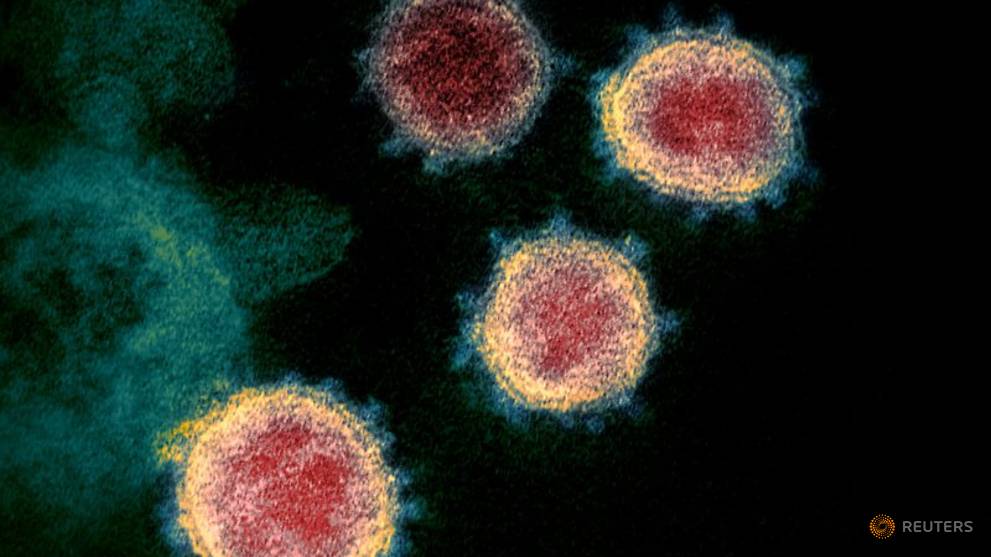
[ad_1]
WASHINGTON: The headaches, confusion and delirium experienced by some COVID-19 patients could be the result of the coronavirus directly invading the brain, according to a study published Wednesday (September 9).
The research is still preliminary, but it offers several new lines of evidence to support what was previously a largely unproven theory.
According to the paper, which was led by Yale immunologist Akiko Iwasaki, the virus is capable of replicating within the brain and its presence deprives nearby brain cells of oxygen, although the prevalence of this is not yet clear.
S Andrew Josephson, chair of the department of neurology at the University of California, San Francisco, praised the techniques used in the study, saying that “understanding whether or not there is direct viral involvement of the brain is extraordinarily important.”
But he added that he would remain cautious until the article underwent a peer review.
READ: COVID-19 Antibodies Present in Patients Four Months After Recovery: Study
It wouldn’t be entirely surprising if SARS-CoV-2 were able to break down the blood-brain barrier, a structure that surrounds blood vessels in the brain and tries to block foreign substances.
The Zika virus, for example, does this too, causing significant brain damage in fetuses.
But doctors had until now believed that the neurological impacts seen in about half of all patients could be the result of an abnormal immune response known as a cytokine storm that causes inflammation of the brain, rather than the virus directly invading.
UNKNOWN PREVALENCE
Iwasaki and his colleagues decided to tackle the question in three ways: infecting laboratory-grown mini-brains known as brain organoids, infecting mice, and examining the brain tissues of COVID-19 patients who had died.
In brain organoids, the team discovered that the SARS-CoV-2 virus is capable of infecting neurons and then hijacking the neuronal cell’s machinery to make copies of itself.
The infected cells, in turn, promoted the death of surrounding cells by blocking their oxygen supply.
READ: AstraZeneca suspends major COVID-19 vaccine trial for safety reasons
One of the main arguments against the theory of direct brain invasion had been that the brain lacks high levels of a protein called ACE2 to which the coronavirus attaches itself and which is found in abundance in other organs such as the lungs.
But the team found that the organoids had enough ACE2 to facilitate entry of the virus, and the proteins were also present in the brain tissue of deceased patients.
They also performed a lumbar puncture on a hospitalized COVID-19 patient suffering from delirium and found that the individual had neutralizing antibodies against the virus in his cerebrospinal fluid, further evidence in favor of their theory.
The team then looked at two groups of mice: one that was genetically altered, so it had ACE2 receptors only in its lungs, and the other only in its brain.
Those infected in their lungs showed some signs of lung injury, while those infected in the brain lost weight rapidly and died quickly, indicating a potentially higher fatality when the virus enters this organ.
Finally, they examined the brains of three patients who died from serious complications related to COVID-19, finding evidence of the virus in all grades to varying degrees.
READ: Singapore scientists develop COVID-19 test method that delivers results in 36 minutes
READ: When can you get the COVID-19 vaccine? Five things you should know
Interestingly, the infected regions showed no signs of having been infiltrated by immune cells, such as T cells, which rush to the site of other viruses such as Zika or herpes to kill the infected cells.
This could suggest that the overloaded immune response known as a cytokine storm, which is responsible for much of the damage seen in the lungs of COVID-19 patients, might not be the main cause of neurological symptoms.
It has been hypothesized that the nose might provide the path to the brain, but the authors wrote that this needed to be validated through further studies.
They added that more autopsies will be required to find out how prevalent the brain infection might be.
CHECK THIS: Our comprehensive coverage of the coronavirus outbreak and its developments
Download our app or subscribe to our Telegram channel for the latest updates on the coronavirus outbreak: https://cna.asia/telegram